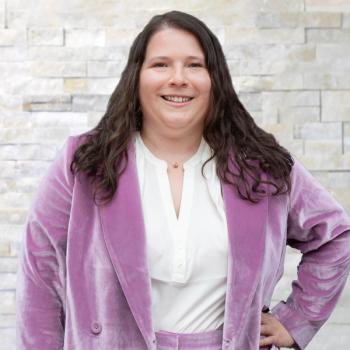
The Latest in Environmental Analysis
A compilation of some of the latest studies in environmental analysis is presented below.
Preserving the environment is vital for sustaining human life on earth. As a result, environmental protection and analysis is an important industry in the scientific community. Spectroscopic techniques, including atomic techniques such as inductively coupled plasma–mass spectrometry (ICP-MS) and ICP–optical emission spectroscopy (ICP-OES) and molecular techniques such as surface-enhanced Raman spectroscopy (SERS), have contributed positively to this field, providing scientists with new information that can help safeguard the environment for future generations (1).
Below is a compilation of some of the latest studies in environmental analysis. Happy reading!
This review article written by Jerome Workman, Jr. examines recent advancements in key spectroscopic techniques used in environmental analysis. It covers atomic, vibrational, molecular, electronic, and X-ray methods for detecting contaminants and analyzing environmental samples (1). Techniques like ICP-MS and ICP-OES are highlighted for their precision in trace elemental analysis, while Raman spectroscopy, including SERS, is used for molecular detection (1). Fourier transform infrared (FT-IR) spectroscopy identifies chemical bonds, X-ray fluorescence (XRF) assesses elemental contaminants, and X-ray diffraction (XRD) analyzes crystalline solids. UV-vis and fluorescence spectroscopy detect analyte concentration and molecular interactions, whereas nuclear magnetic resonance (NMR) provides detailed molecular structure information (1). The review emphasizes these techniques' growing role in environmental science.
A recent study conducted by researchers in Magurele, Romania, analyzed tropospheric ozone concentrations in three locations: urban (P1), forest (P2), and industrial (P3). Using laser spectroscopy, the researchers measured ozone levels, finding that P3 (industrial) had the highest levels, while P2 (forest) had the lowest because of the pollution-reducing capacity of trees (2). The study highlighted that ozone concentrations peaked in summer, especially in the afternoons, influenced by temperature and meteorological factors like wind (2). This research underscored the importance of atmospheric health and trees' role in reducing urban air pollution.
A recent study published in the Royal Society of Chemistry journal highlights Fourier transform-infrared (FT-IR) spectroscopy combined with machine learning (ML) as an effective method for classifying commercial wood species. Researchers from Brazil analyzed five native wood species using this technique, achieving rapid and accurate results compared to traditional methods, which are slower and prone to human error (3). FT-IR provides a molecular fingerprint of the wood’s chemical components, while ML algorithms like support vector machines (SVM) and linear discriminant analysis (LDA) further enhanced accuracy, reaching up to 100% (3). This method supports sustainable forestry by ensuring proper species identification, preventing illegal logging.
A recent “Atomic Perspectives” column, written by Glenna Thomas explored global trends in critical raw materials (CRMs) research and the role of atomic spectroscopy in their identification. Techniques such as ICP-MS, ICP-OES, and X-ray analysis are highlighted for their effectiveness in quantifying CRMs in complex matrices with high interference risks (4). The article discusses key examples, including rare earth elements (REEs) in water leaching purification, acid mine drainage, fly ash residues, and platinum-group elements from sewage sludge (4). It also examines challenges in CRM recovery and the analytical tools used to overcome them.
A recent study published in the journal Science of The Total Environment demonstrates the effectiveness of mid-infrared (MIR) spectroscopy for analyzing vegetated coastal ecosystem (VCE) soils. Conducted by researchers from Curtin University, Edith Cowan University, and the Centro de Estudios Avanzados, the study highlights MIR spectroscopy as a cost-effective tool for measuring total organic and inorganic carbon in VCE soils, which is crucial for carbon sequestration (5). Analyzing 323 subsamples from various VCE sites, the study identified distinct mineralogical and organic patterns, aiding in carbon flux quantification (5).
References
- Workman, Jr., J. A Brief Review of the Latest Spectroscopic Research in Environmental Analysis. Spectroscopy. Available at:
https://www.spectroscopyonline.com/view/a-brief-review-of-the-latest-spectroscopic-research-in-environmental-analysis (accessed 2024-10-22). - Wetzel, W. The Role of Photoacoustic Spectroscopy in Analyzing the Ozone Layer. Spectroscopy. Available at:
https://www.spectroscopyonline.com/view/the-role-of-photoacoustic-spectroscopy-in-analyzing-the-ozone-layer (accessed 2024-10-22). - Wetzel, W. FT-IR Spectroscopy to Accurately Identify Native Commercial Wood Species. Spectroscopy. Available at:
https://www.spectroscopyonline.com/view/ft-ir-spectroscopy-to-accurately-identify-native-commercial-wood-species (accessed 2024-10-22). - Thomas, G. The Application of Atomic Spectroscopy Techniques in the Recovery of Critical Raw Materials from Industrial Waste Streams, Part II. Spectroscopy 2024, 39 (6), 8–11. DOI:
10.56530/spectroscopy.qr1578s7 - Wetzel, W. New Spectroscopy Technique Enhances Understanding of Blue Carbon Ecosystems. Spectroscopy. Available at:
https://www.spectroscopyonline.com/view/new-spectroscopy-technique-enhances-understanding-of-blue-carbon-ecosystems (accessed 2024-10-22).
Newsletter
Get essential updates on the latest spectroscopy technologies, regulatory standards, and best practices—subscribe today to Spectroscopy.



